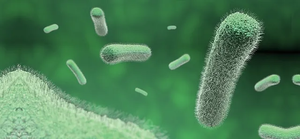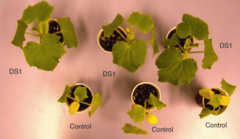Gluconacetobacter azotocaptans
Classification
Bacteria; Pseudomonadota; Alphaproteobacteria; Rhodospirillales; Acetobacteracea; Gluconacetobacter; Gluconacetobacter azotocaptans
Species
|
NCBI: [1] |
Gluconacetobacter azotocaptans
Description and Significance
Gluconacetobacter azotocaptans is a Gram-negative, nitrogen fixing acetobacteria. It is derived from the rhizospheres of coffee plants in Mexico (Fuentes-Ramirez et al., 2001) and the rhizosphere of corn plants in Canada (Mukhtar et al., 2021). It is understudied because it is only known to be derived from these two plants. The bacteria helps to give the coffee and corn plants essential nutrients it cannot obtain itself through nitrogen fixation, making it known to be a plant growth-promoting rhizobacteria (PGPR).
Originally, Gluconacetobacter diazotrophicus was the only known nitrogen fixing species in the genus Gluconacetobacter until Gluconacetobacter azotocaptans was discovered. Gluconacetobacter azotocaptans differs from the original nitrogen fixing species in morphological and biochemical ways (Fuentez-Ramirez et al., 2001).
Genome Structure
G+C Content: 66.3%
BP Count: 4,329,144
tRNA: 50
Complete rRNA's: 1, 2, 7 (5S, 16S, 23S)
Partial rRNA's: 6 (23S)
Functional analysis of the genes shows the important role this microbe has in metabolic pathways like plant growth promotion, bioremediation of toxic compounds, heavy metals, antimicrobial resistance, and abiotic stressors (Mukhtar et al., 2021).
Cell Structure, Metabolism, and Life Cycle
Cell Structure
Gluconacetobacter azotocaptans is a gram negative, non-spore-forming, non-symbiotic, rod-shaped bacterium. It has a cell length of 1.6-2.0 nm and cell width of 0.5-0.6 nm. It is motile with peritrichous arrangement of the flagella, meaning there are multiple flagella along the length of the cell. It's colony color on a medium is tan to light brown.
Metabolism
This species exudes growth with different metabolites like glucose, sucrose, and ethanol with slight growth on D-galactose and D-sorbitol. It also uses metabolites L-alanine, L-aspartic acid, L-cystein, L-glutamic acid, and L-leucine as a nitrogen source with slight growth on L-lysine. It is able to oxidize ethanol to acetic acid and acetate and lactate to carbon dioxide and water (Fuentex-Ramirez et al., 2001), fix nitrogen, solubilize phosphate, and make indole acetic acid and antifungal substances (Mukhtar et al., 2021). Lastly, Gluconacetobacter azotocaptans grow and produce abundant acid on sucrose, D-glucose, and L-fructose.
Life Cycle
Gluconacetobcater azotocaptans is derived from the rhizospheres of coffee and corn plants meaning it lives in the region of soil where the plant roots function. Nutrient cycling is very important in this location where this species in particular does nitrogen fixation. This species is still fairly understudied, but it is being tested in other plants such as cucumber plants to see if it still acts as a plant growth-promoting rhizobacteria (reference Figure 2). Acting as a biofertilizer and growth promoter is this species main job in life.
Ecology
Gluconacetobacter azotocaptans is known for its antifungal activity that defends plants against pathogens like Fusarium moniliforme, F. solani, and F. sambucinum (Mukhtar et al., 2021). Inoculation of this species enhances the growth of corn plants by increasing root and shoot weight up to 23% and 29% respectively. It is a biofertilizer for its host plants: corn and coffee plants (Mehnaz and Lazarovits, 2006). A biofertilizer is defined as substances that contain living microorganisms that when applied to seed, plant surfaces, or soil colonize the plant and promote its growth by increasing nutrient availability (Vessey, 2002).
This species is an aerobe meaning it thrives in oxygenated environments. It has no growth in saline conditions so it is not considered a halophile. Lastly, Gluconacetobacter azotocaptans is a mesophile so it's growth is maximized in moderate temperatures that are not too hot or cold, specifically between 28-30 degrees Celsius for this species.
References
BacDive. “Gluconacetobacter Azotocaptans CFN-CA54: Type Strain: DSM 13594, ATCC 700988: Bacdiveid:43.” BacDive, https://bacdive.dsmz.de/strain/43#ref22919.
Fuentes-Ramírez, L E (07/2001). "Novel nitrogen-fixing acetic acid bacteria, Gluconacetobacter johannae sp. nov. and Gluconacetobacter azotocaptans sp. nov., associated with coffee plants.". International journal of systematic and evolutionary microbiology (1466-5026), 51 (4), p. 1305.
“Gluconoacetobacter Diazotropicans - Manufacturer & Exporter: Indogulf.” Indogulf BioAg, https://www.indogulfbioag.com/gluconoacetobacter-diazotropicans.
Lazarovits, George. “1 Growth-Promoting Effect of G. Azotocaptans DS1 on Cucumber Plant ...” Gluconacetobacter Azotocaptans: A Plant Growth-Promoting Bacteria, 2017, https://www.researchgate.net/figure/Growth-promoting-effect-of-G-azotocaptans-DS1-on-cucumber-plant-under-greenhouse_fig1_318839819.
Mehnaz, Samina, and George Lazarovits. “Inoculation Effects of Pseudomonas Putida, Gluconacetobacter Azotocaptans, and Azospirillum Lipoferum on Corn Plant Growth under Greenhouse Conditions - Microbial Ecology.” SpringerLink, Springer-Verlag, 6 Apr. 2006, https://link.springer.com/article/10.1007/s00248-006-9039-7.
Mehnaz, Samina, et al. “Isolation and Identification of Gluconacetobacter Azotocaptans from Corn Rhizosphere.” Systematic and Applied Microbiology, Urban & Fischer, 10 Jan. 2006, https://www.sciencedirect.com/science/article/pii/S0723202005002031.
Mukhtar, Salma, et al. “Whole Genome Analysis of Gluconacetobacter Azotocaptans DS1 and Its Beneficial Effects on Plant Growth.” 3 Biotech, U.S. National Library of Medicine, Oct. 2021, https://www.ncbi.nlm.nih.gov/pmc/articles/PMC8473476/.
Vessey, J. Kevin. “Plant Growth Promoting Rhizobacteria as Biofertilizers - Plant and Soil.” SpringerLink, Kluwer Academic Publishers, 2003, https://link.springer.com/article/10.1023/A:1026037216893.
Author
Page authored by Emma Crawford, student of Prof. Bradley Tolar at UNC Wilmington.


